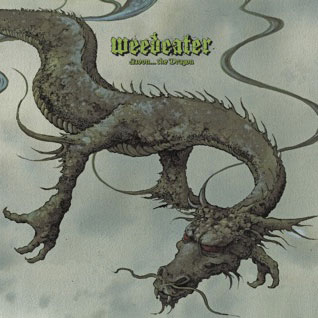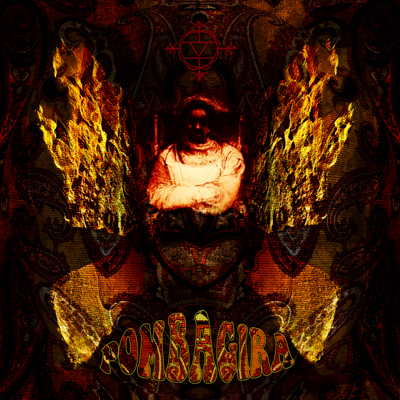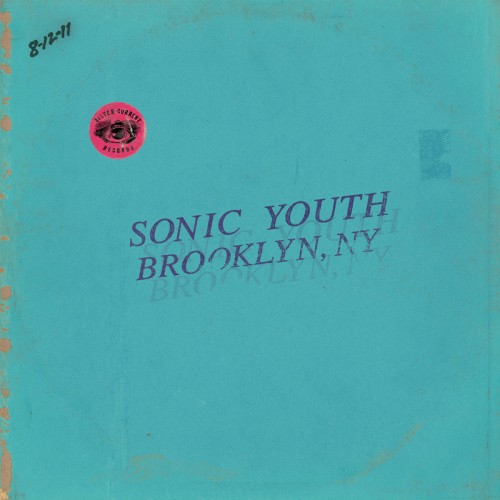New River Studios, London
1 October 2015
Graham Dunning is a name that seems to be popping up all over the place. This isn’t a surprise as he is busy performing, exhibiting, and now, curating; tirelessly working away and putting others to shame with his prolific energy. Performances of late have been as an improv duo with Colin Webster, where they team up on turntable (Dunning) and sax (Webster); with the duo also enlisting the assistance of Sam Underwood (Ore) on tuba from time to time, with magnificent results. Dunning’s other “performances” are with the shady, nebulous art collective AAS, who recently camped out at Supernormal with their shallow grave/chamber and its accompanying live drone soundtrack, before storming the stage with a ritual involving the burning of frankincense by the collectives priests, while the rest of the group accompanied proceedings by blasting out a monolithic krauty techno behemoth.
Most recently, Dunning has performed a multi-channel synth drone set for Dear Serge in Romney Marsh, played his mechanical techno set (we’ll return to this later) at A+A Gallery in Venice, as well as exhibiting a load of blank cassettes with titles that nod to twenty-nine recordings he never got round to making. The biggest undertaking of late has been his residency at the Machines Room maker space at Lime Wharf, east London. Titled Rhythm & Drone//Research & Development, Dunning explored the relationship between, well, rhythm and drone, along with making recordings and new machines. Apart from these activities from Dunning, there were talks from sound artists Tom Richards, Tom Mudd and Leslie Deere, and sound art curator Mark Jackson. This was all wrapped up with a live event at New River Studios in Manor House, a wonderfully successful event that is the subject of this very same review.The set up for the event was akin to a workshop; the room at the back of the seemingly vast New River Studios replete with a large table (or set of tables, who knows?) chock-a-block with musical gadgets and contraptions (surely a techie’s wet dream?). The audience were invited by Dunning to walk around the table and take a good look at the boxes on display. Of course, once proceedings were underway, the audience regressed back to the usual gig etiquette and stood at a respectful distance from the performer.
First up was Tom Mudd on a laptop, using synths he built himself in Supercollider. These synths were triggered via algorithms based around church bell ringing patterns, and gave off glorious sensations of brightly-lit swirls; lively and zesty. After some time a female voice entered into the mix, counting from one to six and back again. This gave the impression of the piece short-circuiting; especially when the numbers started to be read out in what appeared to be a random pattern — fantastic.Tom Richards followed, using a Theremin aerial which was controlling the rotation speed of a turntable spinning a record of bird song. This he activated throughout by comically leaning towards the aerial, lending even more laughs to a very funny piece. Rhythmically he got into a groove akin to an ultra-minimal micro house cut, replete with cheeky “ooohs” and “aaahs” (these were dubplates of Tom singing vowel sounds played on the voltage-controlled turntables he invented). Apparently much of Richards’ set up was home-made, including sequencers with buttons to randomise the sequence; hindering “precision”. However, you really did not need to know any of this to enjoy a track that could as easily fitted into a Matthew Herbert DJ set as it did in this context. Smiles and nods aplenty.
Next up was the man of the moment. It’s no surprise that Graham Dunning put himself in the middle of the line-up, as this is in keeping with his humble, low-key approach; nothing as crass as headlining events that he has put on himself. His set was one of his mechanical techno performances, which has evolved somewhat over the last year or so. Now the set up is more streamlined, yet paradoxically, more complex. His turntable layer cake reaches up to a stack of six or seven records, each disc of vinyl separated by a spool from duct/masking tape. Apart from a dubplate of a wind farm recorded at the recent and aforementioned site-specific performance at Romney Marsh, modified and blanked out with a vinyl sticker, the rest of the records made from white labels found in charity shops, referencing the “throwaway nature of dance music, recycling once treasured and now discarded objects”. AApart from the sound emitting from the field recording via the conventions of a record needle, the rest of the vinyl stack was being utilised with the assistance of various contraptions (clamps and piezo mics in the area); there were copper tacks, tone arms triggering analogue synths, automated cowbell, as well as nuts and bolts attached to vinyl, setting off the piezo contact mics hanging from clamps. From this elaborate setup, Dunning conjured rubbery baselines, crisp hi-hats, thudding kick drums and all of the necessary components for a stark, minimal, wonky techno piece.
One of the real joys of seeing Dunning perform this piece — apart from being transfixed by the hypnotising kinetic sound sculpture that you see him construct and dismantle throughout — is the tension built up from the blindingly obvious fact that the whole thing can fall apart at any minute; and indeed the clanking grooves and nasty riffs separate, fall away from each other and roll back in place again and again, confronting the listener/viewer with the wonderful paradox of experiencing something relentlessly clockwork, yet totally unreliable. The stack of records was built up, de-constructed and built up again; giving us the chance to hear two ‘tracks’, tracks that we will sadly never hear in that exact form ever again. The crowning glory was delivered at the final stages of the second techno construction, with Dunning playing a light responsive synth with a torch and the rotating prisms he placed at the top of the techno cake. This not only added a squirming, flickering riff to proceedings, but also gave off a mini lightshow, briefly turning New River Studios into an actual rave. The crowd were grinning from ear to ear by the end and stunned by something truly, well, stunning.Dunning’s piece was a hard act to follow, so it was lovely to see that when the event picked up after a short break, the next performer took things in a totally different direction from the locked grooves of Richards and Dunning. Leslie Deere performed a live soundtrack to one of her really rather beautiful videos. The video was a reference to scientific experiments that used flashing lights/colour on its human subjects with an aim of recording the effect this had on them.
The film was a gorgeous mix of deep tones, grainy images, and subtle abstract shifts. The music was ever-evolving, just like the film: slow, expansive, but never static. The piece would move from greyscale claustrophobia to bright, floaty expansion effortlessly; twinkling beauty oozing into ominous dread in an instant. Her musical setup was a laptop using various field recordings on Logic, brought in and out of the mix via controller; with the accompaniment of a Watkins Copicat tape delay unit and contact mic, physically manipulated. Both sound and video worked brilliantly together.Finally we had Shelley Parker delivering cold, industrial machine music. Talking about ghosts in the machine, Parker has the spectre of rave dancing around with the rigid beats of early ’80s Sheffield inside her metal boxes. Parker uses a classic hip-hop sampling/sequencing production machine (an MPC) to build and perform her tracks, along with a Korg monitor synth. Shelley’s samples are recorded by her from field recordings of industrial locations (factories, what have you), so the clank and stamp of production line machines is prevalent throughout her set, with the hints of techno being strapped down tightly in a steel straightjacket; like Test Dept jamming with Chris and Cosey assisted by Juan Atkins on the mixing desk.
The greyscale claustrophobia mentioned in regards to Deere’s set is relentless and unremitting during Parker’s; and you can almost sense the whole room gasp for air once it ends. It was a strong finish to an impeccable event; each act delivering incredibly strong pieces of sound art that, without taking away from that discipline in its own right, also served as a great night of musical entertainment. It isn’t very often, unfortunately, that one can say they enjoyed each and every act on a night, especially when there are five performers on the bill; luckily, we get nights like the Ghost In The Machine Music from time to time.-Jay Harper-



